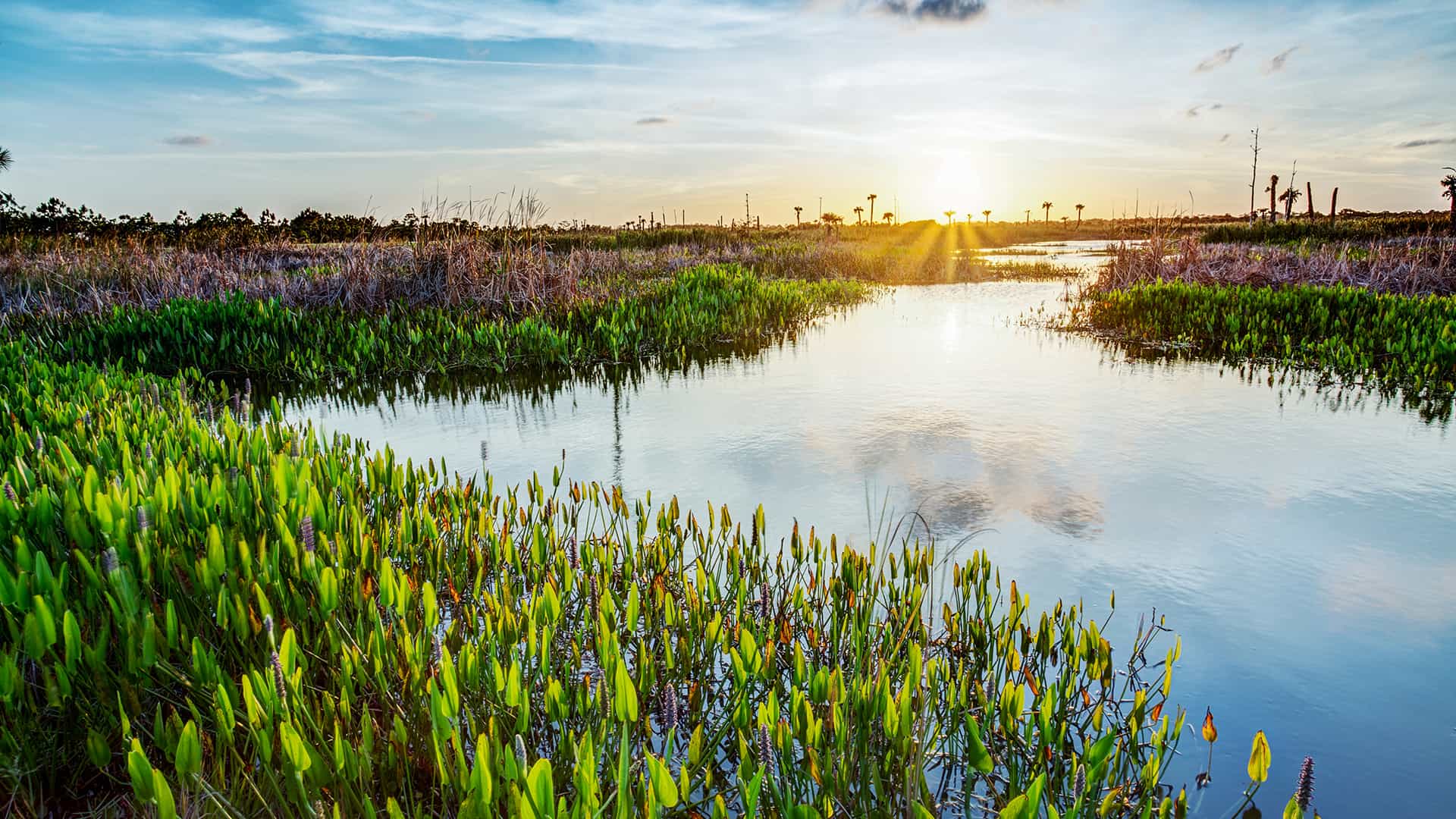
The meaning behind the “WOTUS” acronym (Waters of the United States) has long left many in business, industry, agriculture and even government yearning for clarification. In the past year, President Trump has pushed for a new Clean Water Rule (also called the WOTUS Rule) and Environmental Protection Agency (EPA) officials have established a deadline for defining “navigable waters” that are subject to permitting under the rule’s scope, yet a veil of uncertainty still shrouds the subject. When might it be lifted?
There may be answers on the horizon, but how do industrial plants, real estate developers, agricultural operations, and essentially any entity conducting a project on or adjacent to land containing wetlands move forward in the meantime? Defining navigable waters, or WOTUS, is important because it determines which bodies of water are subject to federal permitting requirements and which waters are beyond the scope of federal authority.
At the beginning of 2018, EPA Administrator Scott Pruitt announced that the EPA and United States Army Corps of Engineers (USACE) were taking steps to reduce confusion by staying the 2015 WOTUS rule developed by the Obama administration. He stated that it “…will not be applicable for the next two years, while we work through the process of providing long-term regulatory certainty across all 50 states about what waters are subject to federal regulation.”
When Congress passed the Clean Water Act in 1972, it introduced regulations and permitting requirements that pertained to any entity that released – or discharged – pollutants into the waters of the United States to protect human and aquatic life. Though containing strong intent, the definition of regulated waters was vague. Did it include every puddle of water and drainage ditch in the 50 states, or was the focus on waterways that affected larger populations and ecosystems?
Containing conflicting Supreme Court opinions, Rapanos v. United States (2006) illustrated the opportunity for varied interpretations of WOTUS. Justice Anthony Kennedy argued the Clean Water Act covered wetlands that “significantly affect the chemical, physical, and biological integrity of other covered waters.” Justice Antonin Scalia, on the other hand, argued that wetlands protections included those “with a continuous surface connection” to navigable water. With neither opinion trumping the other, the waters remained muddied.
The Final Rule issued in 2015 was an attempt to further define WOTUS; however many interpreted it as expanding federal authority to regulate even the smallest of wetlands. For example, the following were proposed to be included in WOTUS:
- Tributaries of navigable rivers that were previously evaluated on a case-by-case basis would be automatically protected if they have a bed, bank, and high-water mark. This includes streams that are dry for part of the year.
- Wetlands and ponds would be automatically covered if they’re within 100 feet or within the 100-year floodplain of a protected waterway.
- Certain “isolated” waters not connected to navigable waters would get automatic protection if they have a “significant nexus” to protected waters.
This prompted many lawsuits against the 2015 WOTUS rule, which delayed its implementation. Then Trump issued an executive order on February 28, 2017, directing the EPA and USACE to revise the Clean Water Rule, and to consider Scalia’s argument that wetlands be protected only if they had a continuous surface connection to navigable waterways, and that streams be protected only if they were “relatively permanent.” These actions indicate a leaning toward fewer wetlands covered under the WOTUS definition, but that will not be clear until the conclusion of the federal rulemaking process underway right now.
Edison Electric Institute (EEI), an association of U.S. investor-owned electric companies that provide electricity for 220 million Americans, filed comments during the original comment period for the 2015 WOTUS Rule that explained how the rule’s proposed broader reach could affect U.S. industry:
“We are concerned that in its current form, the proposed rule would require EEI members and other individuals and companies nationwide to engage in far more permitting, studies, compliance efforts, mitigation, and related actions involving the EPA, the Corps, and state and local water quality managers than under current regulations…EEI is concerned that the increase in time and financial resources to address marginal water features and potentially wet areas will strain limited company, property owner, and agency resources that are already overburdened, while providing minimal benefits in terms of water quality.”
The team at EDGE has the expertise and experience needed to help you navigate the uncertainty of the Clean Water Act’s permitting processes and opaque future. We are here to answer your questions, and to make recommendations about implementing best practices so that your projects move forward efficiently and achieve positive economic and ecological results.
Call EDGE, and we will start the discussion. Bringing further insight.
